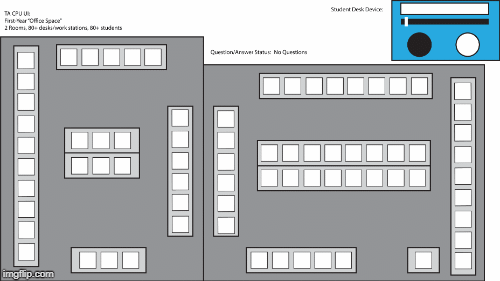Find a problem to solve: All of the 80 first-year ETC students take a class called Building Virtual Worlds that splits them into one of three different roles: sound designer, programmer, or artist. Students essentially make new video games every two weeks, usually on different software or hardware platforms they are learning about as they build. As you can expect, this means there are a lot of questions for TAs to answer; however, not all questions can be answered by each TA. We have at least 6 different types of TA that all specialize in their own field/software/etc. One of the biggest problems in the class is that when students ask for help, the TA on duty never seems to specialize in the field they have a question, so it takes them finding another TA to answer it. This game of telephone usually results in a) longer wait times for each student, b) fewer total questions being answered, or c) questions being answered by TAs that may not be qualified (3D modelers answering hardware coding questions for example). In addition to all of this, all 80+ students sit in the same office space so it is really a test of a student’s luck whether or not a TA will see them when he or she walks by or if they have to wait for them to circle back around.
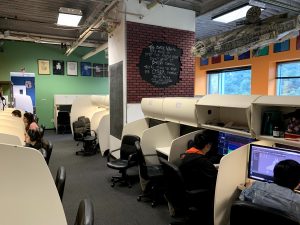
Describe the general solution: Students should be able to request help from specific TAs to answer their specific questions quickly and easily. TAs should also have a system so they can track what types of questions are asked where, the order in which they are asked, and who is going to answer them. Both parties should also both be able to see the status of the question (asked, waiting, answering, answered, etc.).
Proof of Concept: An Arduino with a button, slider/potentiometer input, RGB LED, an LCD monitor and a computer program interface with a state machine of the question-asking/answering process. When students have a question, they can adjust the slider to select which type of TA they would like help from. The LED would turn on (in the corresponding color of the TA group) to signal that the TAs have been alerted. On the TA-facing computer program, TAs can see a map of where the students are and their questions based on the colors. TAs can start the answering process by selecting and attaching their name to a question, which is communicated to the student’s device through 1) the LED flashing and 2) the name of the TA appearing on the screen because they are on their way down to help. Once at the student’s desk, the TA can press and hold the button on the student’s device to alert the other TAs that the student is being helped by changing the color of the LED on the device and on the UI. Finally, once the question is answered, the TA can press and hold the device’s button again to turn the LED off.
Fritzing Sketch: Disclaimer – likely not accurate, playing with software and different components.
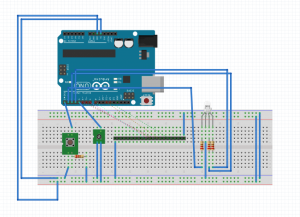
First Iteration of Device Model: 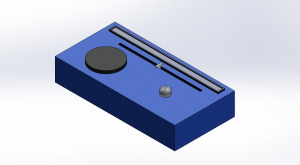
Student & TA User Journey: 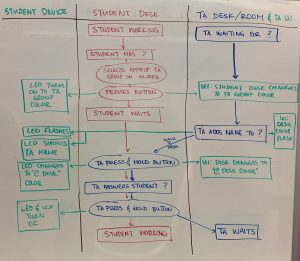
Demo TA-facing UI & Student Device: 